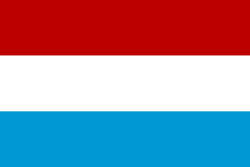Andra anglo-mysoreanska kriget
| Andra anglo-mysoreanska kriget | |||||||
|---|---|---|---|---|---|---|---|
 Karta över Första och Andra anglo-mysoreanska kriget | |||||||
| |||||||
| Stridande | |||||||
| Befälhavare och ledare | |||||||
| |||||
Andra anglo-mysoreanska kriget utbröt till stor del på grund av att amerikanska frihetskriget då pågick, och britterna antogs vara sämre rustade än annars att försvara sina positioner i Indien.[1]
Den mysoreanska hären på 100 000 man marscherade genom Östra Ghats och började plundra Koromandelkusten. De två brittiska arméavdelningarna i området, under general Baille respektive general Munro sökte förena sig, men innan detta lyckades hade Baille omringats av fiendearmén. Baille förlorade de flesta av sina 86 brittiska officerare och 3 000 man vid drabbningen som ägde rum vid Pollilur 10 september 1780.
Baille själv blev vid Pollilur fången, och Haider Ali avstod från att förfölja resterna av den besegrade armén, för att istället marschera mot Arcot som belägrades i åtta veckor, innan staden gav sig.
Fred slöts i Mangalore 11 mars 1784.
Referenser
- ^ Barua, Pradeep P. (2005). The State at War in South Asia. Lincoln: University of Nebraska Press. ISBN 0-8032-1344-1. LCCN 2004021050.
Media som används på denna webbplats
Flag of the Republic of the Seven United Netherlands (known as the Hollandsche Vlag or Statenvlag).
Replaced orange with red, please see this discussion on the German Wikipedia for more information.
Flag of the Kingdom of Mysore. "The flag of Mysore was red over brown with arms in the centre. The image above, without arms, is incorrect and this flag was never official. The colours of the flag are defined in French as 'rouge brique sur brun' [brick red and brown]. As far as I know the brown is a light maroon (perhaps like the golden shown in Neubecker (1992)) and I speculate that the flag can in fact be red over golden. Remember that some months ago Nozomi Kariyasu travelled to Bangalore (capital of Mysore/Karnataka[)] and he saw many red over yellow flags." Jaume Ollé, 21 August 2000
Författare/Upphovsman: Sodacan, Licens: CC BY-SA 3.0
Royal Standard, raised in the presence of the King of France (used as a state flag by the Kingdom of France under the absolute monarchy). Used from around 1638 to 1790
British Red Ensign (1707–1800)
Författare/Upphovsman: Oren neu dag, Licens: CC BY-SA 2.5
A vectorized Version of Flag of Hanover (1692).gif
Horse image taken from
Författare/Upphovsman: Ingen maskinläsbar skapare angavs. Miljoshi antaget (baserat på upphovsrättsanspråk)., Licens: CC BY 2.5
Map illustration showing the territories involved in the first and the Second Anglo-Mysore War between the Kingdom of Mysore of southern India and the British East India Company.
Map reference: University of Pennsylvania at [1] (URL accessed: 12-MAR-2006)Flag of the British East India Company, 1707–1801. The number of stripes varies in historical depictions. The variant with 13 stripes only emerged after the creation of the Province of Georgia in 1732.
It was the Naval Ensign of the Kingdom of France (pure white version) as used before 1789, and between 1814/15 and 1830.








